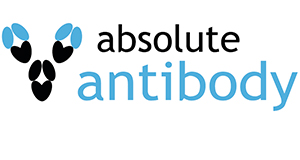Anti-5T4 (A1)
Anti-5T4 [A1], Recombinant, IgG kappa, Rabbit
Artikelnummer
ABAAb04700-23.0-BT
Verpackungseinheit
1 mg
Hersteller
Absolute Antibody
Verfügbarkeit:
wird geladen...
Preis wird geladen...
CloneID: A1
Antigen Long Description: The original mouse antibody was generated by immunizing mice with human 5T4 antigen. Later on the CDRs of the mouse antibody were grafted onto human framework regions to generate a fully human antibody.
Buffer Composition: PBS only.
Uniprot Accession No.: Q13641
Specificity Statement: This antibody binds the ectodomain regions of human 5T4 antigen which is overexpressed by a wide spectrum of cancers, including colorectal, ovarian and gastric, but with a limited normal tissue expression.
Application Notes (Clone): The epitope mapping of this antibody was done using ELISA. This antibody was used in the generation of an anti-5T4 antibody-drug conjugate (A1mcMMAF; PF 06263507) by sulfhydryl-based conjugation of the humanized A1 antibody to the tubulin inhibitor monomethylauristatin F (MMAF) via a maleimidocaproyl linker. A1mcMMAF exhibited potent in vivo antitumor activity in a variety of tumor models and induced long-term regressions for up to 100 days after the last dose. In a non-small cell lung cancer patient-derived xenograft model, A1mcMMAF treatment resulted in sustained tumor regressions and reduced TIC frequency (PMID: 23223830). Treatment with A1mcMMAF significantly improved survival without overt toxicity in mice engrafted with a 5T4-positive acute lymphoblastic leukemia cell line (PMID: 28341731). The original humanized IgG antibody A1 has a Kd of 0.9 nM against the 5T4 antigen, binds to a broad range of 5T4 expressing cell lines, and rapidly internalizes (66% internalized within 4h). As an ADC, A1mcMMAF retains similar properties to the unconjugated Ab. In vitro, A1mcMMAF exhibited receptor-density dependent cytotoxic activity against a panel of 5T4 + cell lines with an IC50 of 5 ng Ab/ml against high 5T4 expressing cells. A1mcMMAF exerts no inhibitory effect on 5T4 negative cells demonstrating it does not exert off-target activity in vitro. Against the low 5T4 expressing H1975 tumor xenograft, A1mcMMAF causes potent tumor regression in spite of its lack of in vitro inhibitory activity against this cell line (Molecular Cancer Therapeutics 10, Nov 2011, Supplement 1:A215-A215).
Antigen Long Description: The original mouse antibody was generated by immunizing mice with human 5T4 antigen. Later on the CDRs of the mouse antibody were grafted onto human framework regions to generate a fully human antibody.
Buffer Composition: PBS only.
Uniprot Accession No.: Q13641
Specificity Statement: This antibody binds the ectodomain regions of human 5T4 antigen which is overexpressed by a wide spectrum of cancers, including colorectal, ovarian and gastric, but with a limited normal tissue expression.
Application Notes (Clone): The epitope mapping of this antibody was done using ELISA. This antibody was used in the generation of an anti-5T4 antibody-drug conjugate (A1mcMMAF; PF 06263507) by sulfhydryl-based conjugation of the humanized A1 antibody to the tubulin inhibitor monomethylauristatin F (MMAF) via a maleimidocaproyl linker. A1mcMMAF exhibited potent in vivo antitumor activity in a variety of tumor models and induced long-term regressions for up to 100 days after the last dose. In a non-small cell lung cancer patient-derived xenograft model, A1mcMMAF treatment resulted in sustained tumor regressions and reduced TIC frequency (PMID: 23223830). Treatment with A1mcMMAF significantly improved survival without overt toxicity in mice engrafted with a 5T4-positive acute lymphoblastic leukemia cell line (PMID: 28341731). The original humanized IgG antibody A1 has a Kd of 0.9 nM against the 5T4 antigen, binds to a broad range of 5T4 expressing cell lines, and rapidly internalizes (66% internalized within 4h). As an ADC, A1mcMMAF retains similar properties to the unconjugated Ab. In vitro, A1mcMMAF exhibited receptor-density dependent cytotoxic activity against a panel of 5T4 + cell lines with an IC50 of 5 ng Ab/ml against high 5T4 expressing cells. A1mcMMAF exerts no inhibitory effect on 5T4 negative cells demonstrating it does not exert off-target activity in vitro. Against the low 5T4 expressing H1975 tumor xenograft, A1mcMMAF causes potent tumor regression in spite of its lack of in vitro inhibitory activity against this cell line (Molecular Cancer Therapeutics 10, Nov 2011, Supplement 1:A215-A215).
| Artikelnummer | ABAAb04700-23.0-BT |
|---|---|
| Hersteller | Absolute Antibody |
| Hersteller Artikelnummer | Ab04700-23.0-BT |
| Verpackungseinheit | 1 mg |
| Mengeneinheit | STK |
| Reaktivität | Human, Primate, Cynomolgus Monkey (Primate) |
| Klonalität | Recombinant |
| Methode | ELISA |
| Isotyp | IgG kappa |
| Wirt | Rabbit |
| Produktinformation (PDF) |
|
| MSDS (PDF) | Download |

 English
English







